
Yield Estimation & More: New In EOSDA Crop Monitoring
As the first quarter of 2024 is coming to an end, it’s time to share the newest and hottest updates on what we’ve been working on. With EOSDA Crop Monitoring, our team continues to wade through the thorns to the stars by enhancing precision agriculture from space. Check out some remarkable key product updates to the platform we’ve made in the last three months.
Yield Estimation
To empower our clients to make more informed decisions, we released a Yield Estimation. This new addition provides farmers, agronomists, and agricultural researchers with crop yield and biomass predictions for the next 14 days. Combined, the data about crop type, weather forecasts, and irrigation methods provide impactful insights into farm management.
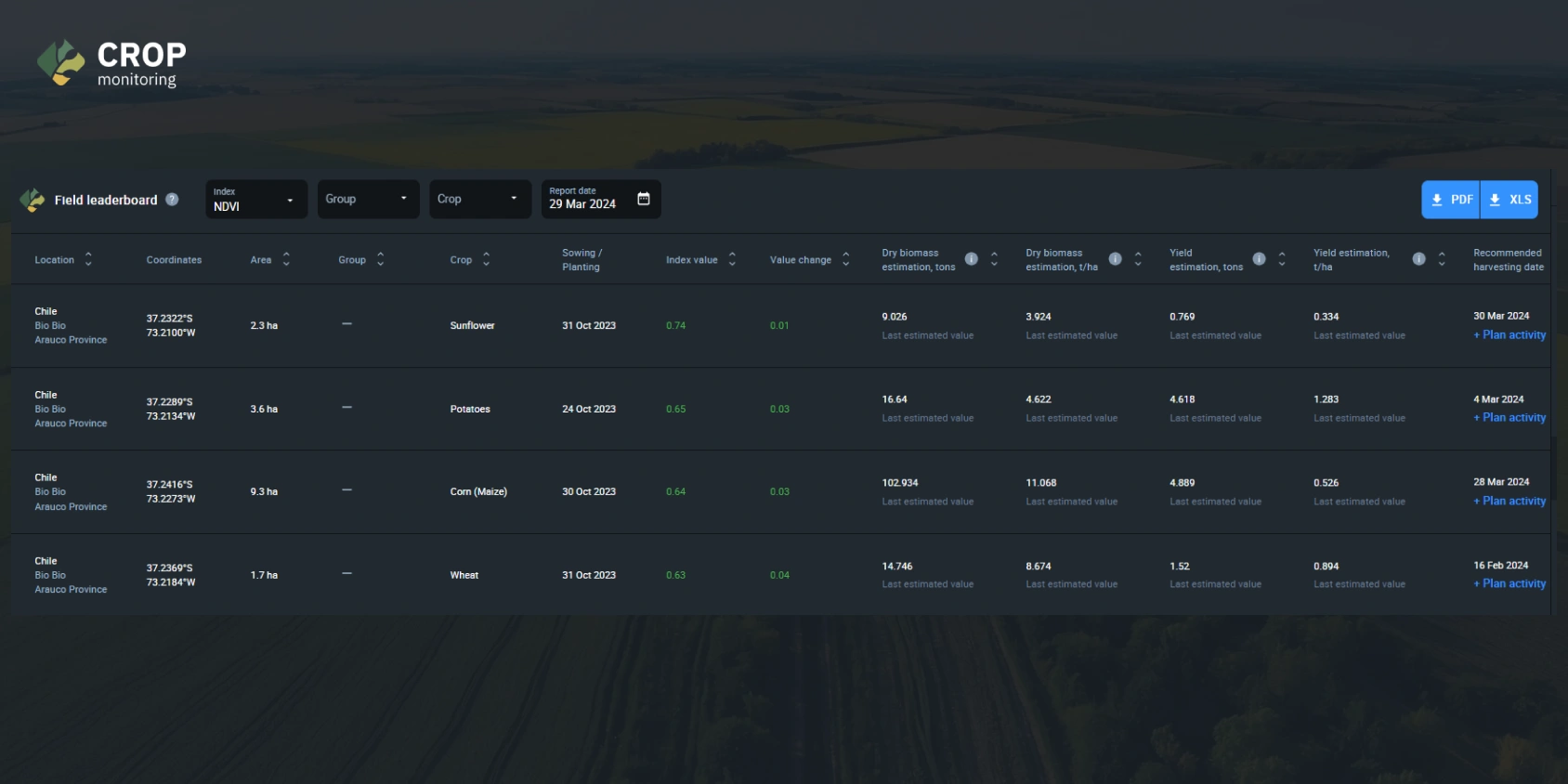
Currently, the feature is available as an add-on upon request. To activate it, please submit a request through the Field Leaderboard page or contact your customer success manager directly. Stay tuned for the following updates, including the integration to Field Analytics and Global View pages.
Typical Index Range For Current Growth Stage
For some time, our clients wanted to receive hints on what index values can be considered within the norm for the current growth stage of the specific crop. As different growth stages show various levels of indices values, we answered the call and added the Typical (recommended) index range to the platform.
This feature emerged through collaborative efforts between the Science and Product teams. Our scientists researched dozens of fields worldwide and provided us with typical indices ranges for each growth stage of the specific crops. So, I’d like to thank them all for their efforts in developing and implementing this add-on in such short terms.
As for the feature’s operation, the vegetation stage is shown on the chosen date, and a relevant Typical index appears in the legend where you usually see the indice meanings. In case there is no hint in the legend, it means that the growth stage for the current date and selected crop could not be detected.
This feature is available for NDVI, NDRE, and MSAVI indices and is available for such crops as wheat, oats, rye, winter cereals, soybeans, corn (maize), and sunflower.
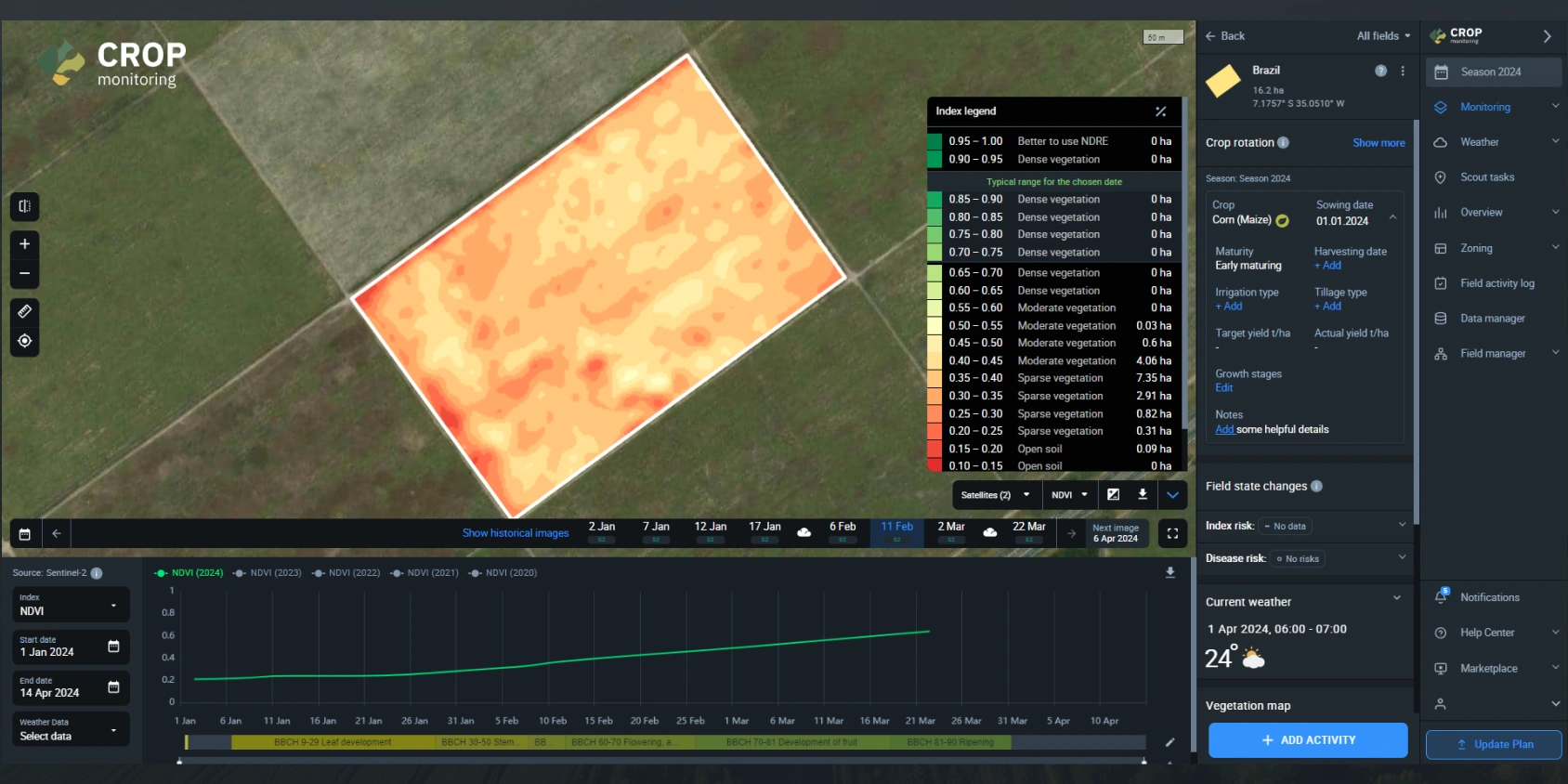
In the future, as we collect and analyze ground data, we will further enhance our platform by expanding our lists of supported crops and indices.
EOSDA Crop Monitoring
Using satellite monitoring for remote fields management in one platform!
Growth Stage Editing
As growth stage detection of the crops is crucial for our client to build their farming processes on, we decided to add the ability to edit that said stage.
In case crops have an algorithm with growth stage autodetection, meaning the ones with a green leaf icon next to their name, the user can insert or change start dates for calculated stages. For some other crops, the user can simply input the start dates. For such crops, we are providing a list of predetermined stages.
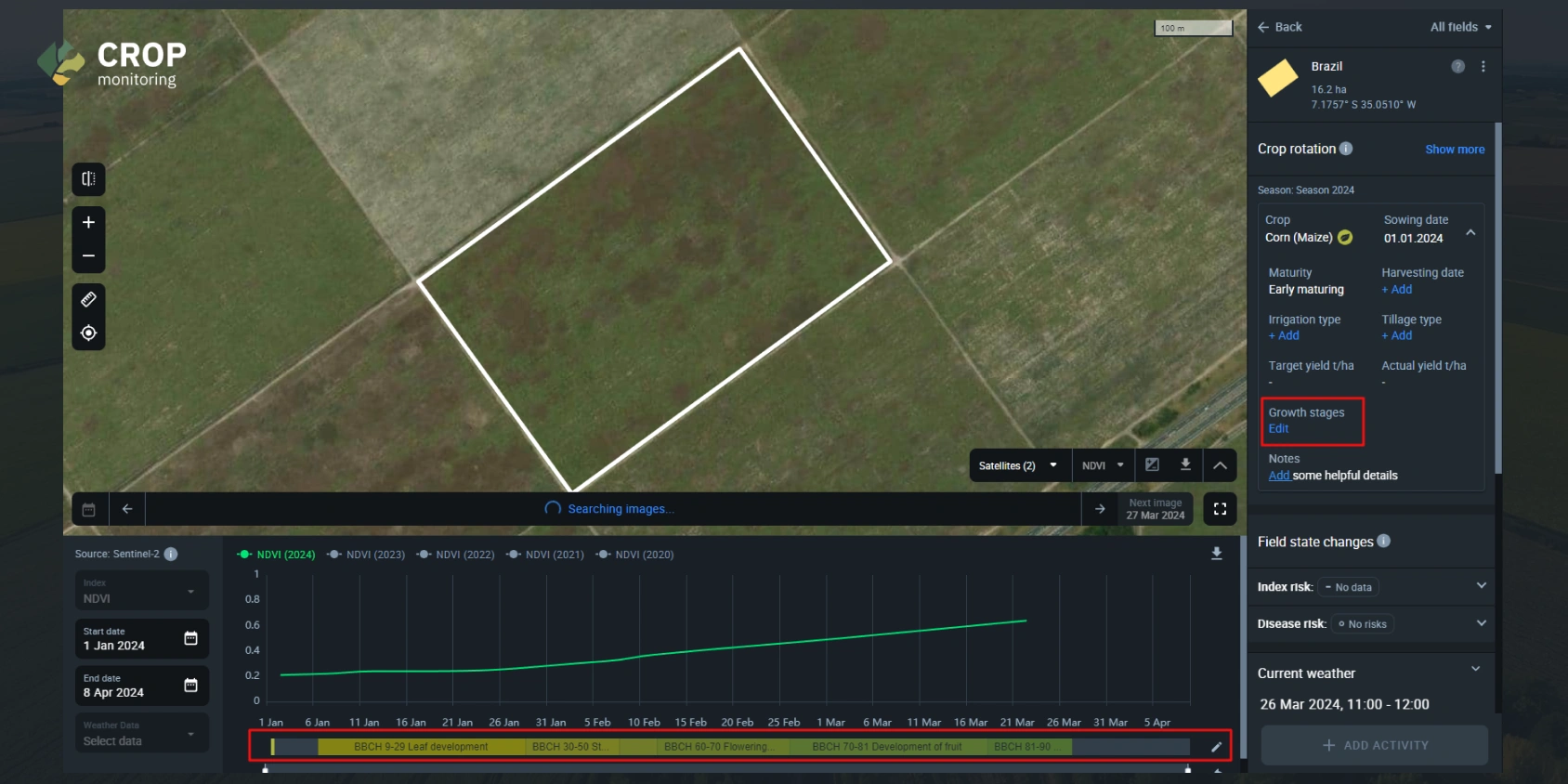
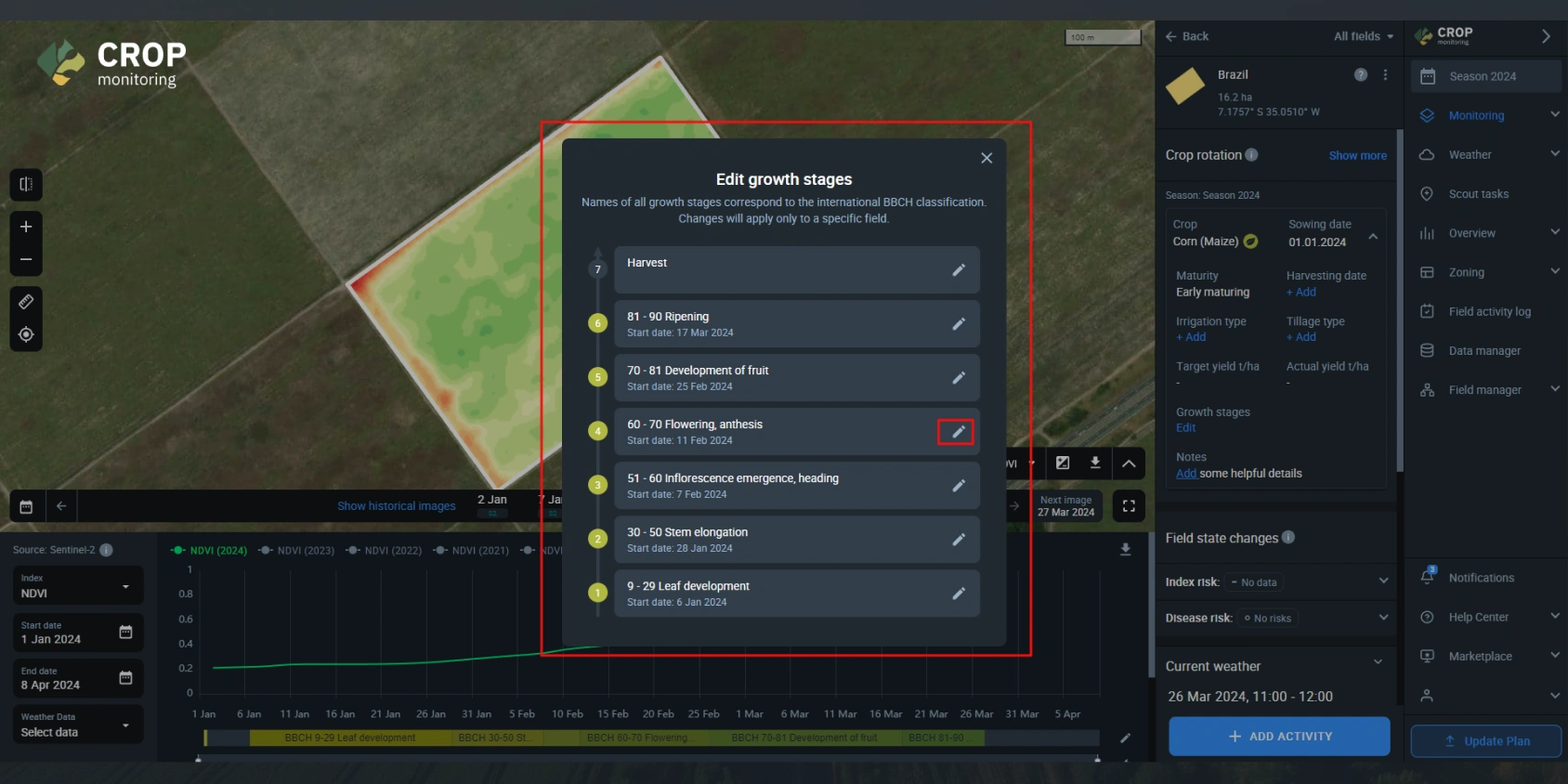
In further iterations, we will work on the UI so that users can notice this feature more easily.
Integration Of The Flow For Perennial Crops
To differentiate everlasting plants from other crop types, we have added an integration of the flow for perennial crops. Sugarcane and asparagus, for instance, are planted once and then cut off in subsequent years. To automatically detect the growth stage for those cut-off crops, we added the planting and cut-off date differentiation so that the user can tick a box, as can be seen in the images below. That way, the platform considers the vegetation cycle starting from a specific date and including the cut-off dates in the rotation.
As for now, the algorithm for automatic growth stage detection is available for sugarcane and asparagus only.
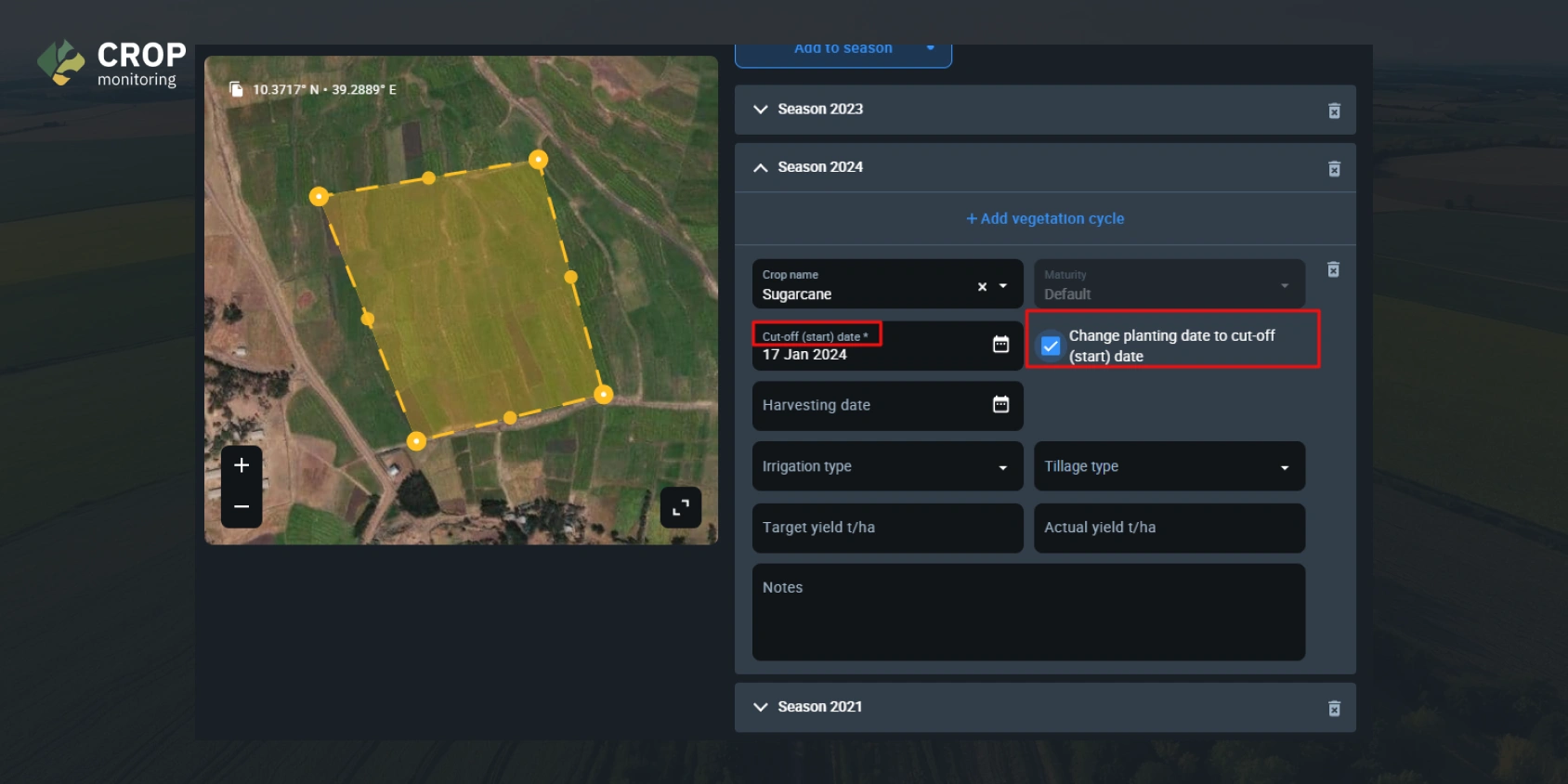
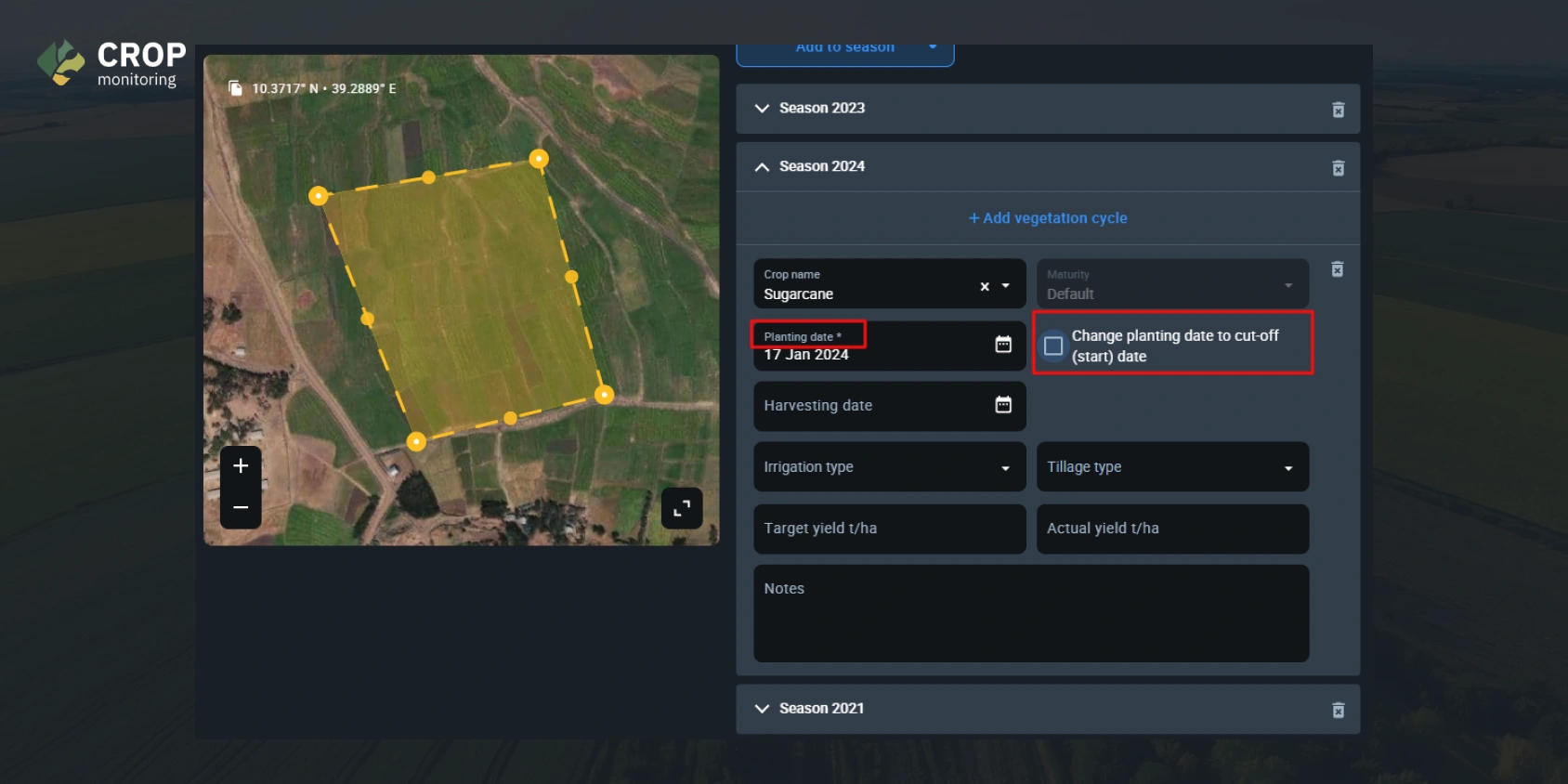
As an additional function, we also integrated the “seeding” type. Since the name input “sowing date” does not suit all crops, the date naming for sowing and planting will change depending on the selected crop.
Custom Roles In Team Management
Another update our clients requested is Custom Roles, the ability to create specific roles for those involved in your operations. As all organizations operate in different formats, this ability is beneficial for diversifying your team members’ accessibility to certain data or platform areas. This feature allows users to hide or show explicit functionality to a specific role. Custom roles are available as an add-on. To enable it, contact your customer success manager.
Default roles, such as admin, scout, and observer, are still available.
Activities Costs Widget In Season Analytics
The users now have the ability to track the costs of activities that they create in the Field Activity Log. It helps you with tracking the total planned and actual costs of activities per crop and displaying any deviations. The main goal here is to track materials usage and see the expenses by crop in the season and for a particular activity type.
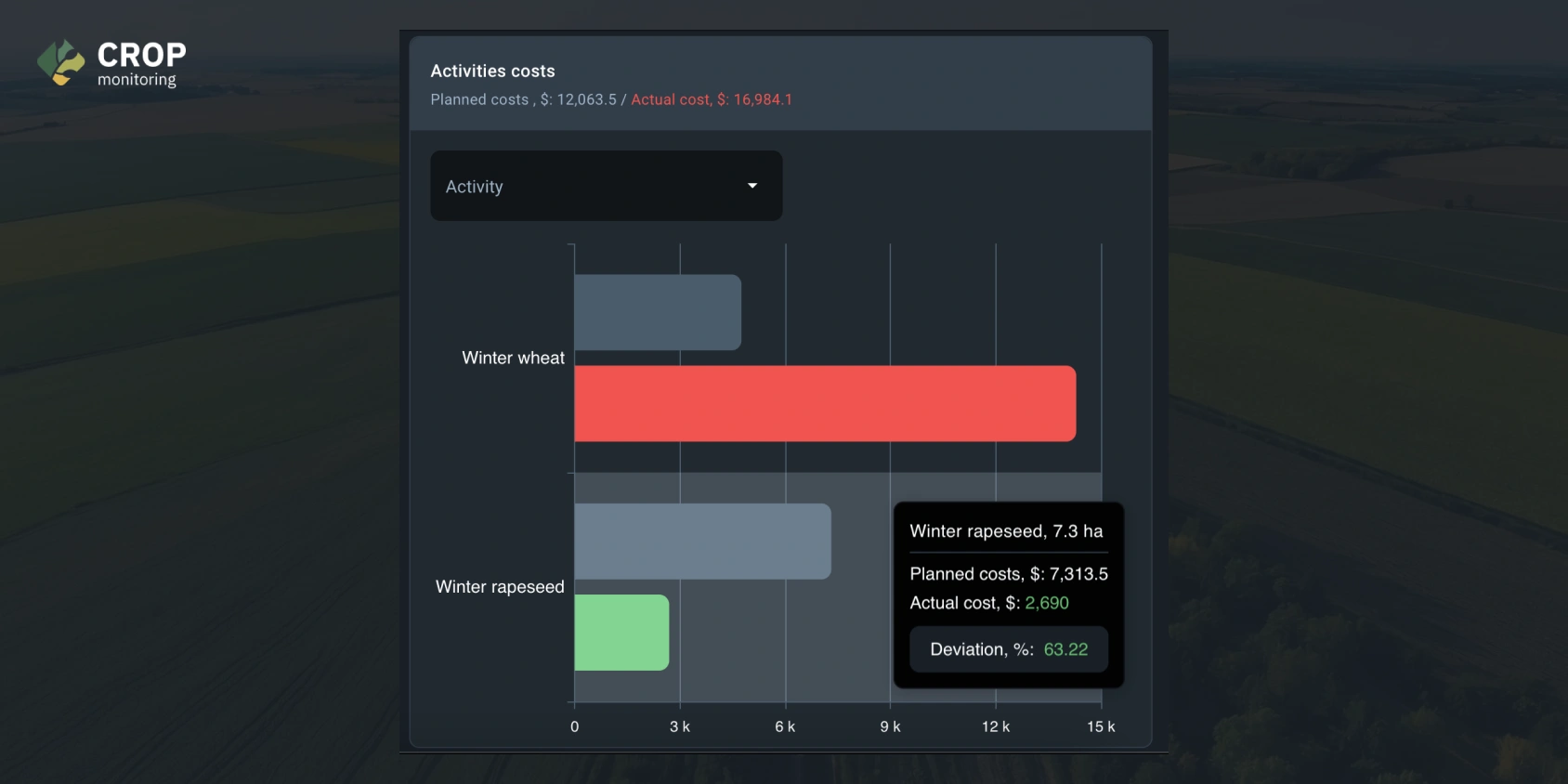
Sustainable and precise agricultural solutions worldwide rely heavily on the client’s needs. We require your input to become better every day, as you, the end users and active agricultural experts, can pinpoint what features can make your work easier. If you have any suggestions, questions, or comments about EOSDA Crop Monitoring, please don’t hesitate to reach out to us via our contact form.
About the author:
Lidiia Lelechenko holds a Master Degree in Viticulture, Winemaking & Marketing obtained in ESA (École supérieure d'agricultures d'Angers). She has over 6 years of experience in various roles related to SaaS solutions sales and research activities in sensory analysis. Currently, Lidiia is responsible for strengthening EOSDA presence and recognition on European markets as an Account Executive.
Recent articles

Analyze 2025 & Plan Your Best Year Yet: LandViewer Christmas Offer
It’s the most wonderful time of the year! The Christmas holidays are here, and so is your chance to analyze 2025 and plan a prosperous 2026 with more affordable Pro plans in LandViewer.

EOSDA Models Climate Change Impact On Sugarcane Yields
EOSDA modeled future temperature, rainfall, and other climate impacts on Veracruz sugarcane. The results help growers plan long-term adaptation strategies, including timing, varieties, and irrigation.

EOSDA LandViewer Black Friday Sale: Exclusive Offers & Giveaway
This Black Friday, LandViewer offers new users the chance to save on monthly plans, get extra months with yearly subscriptions, and participate in a free annual plan giveaway.